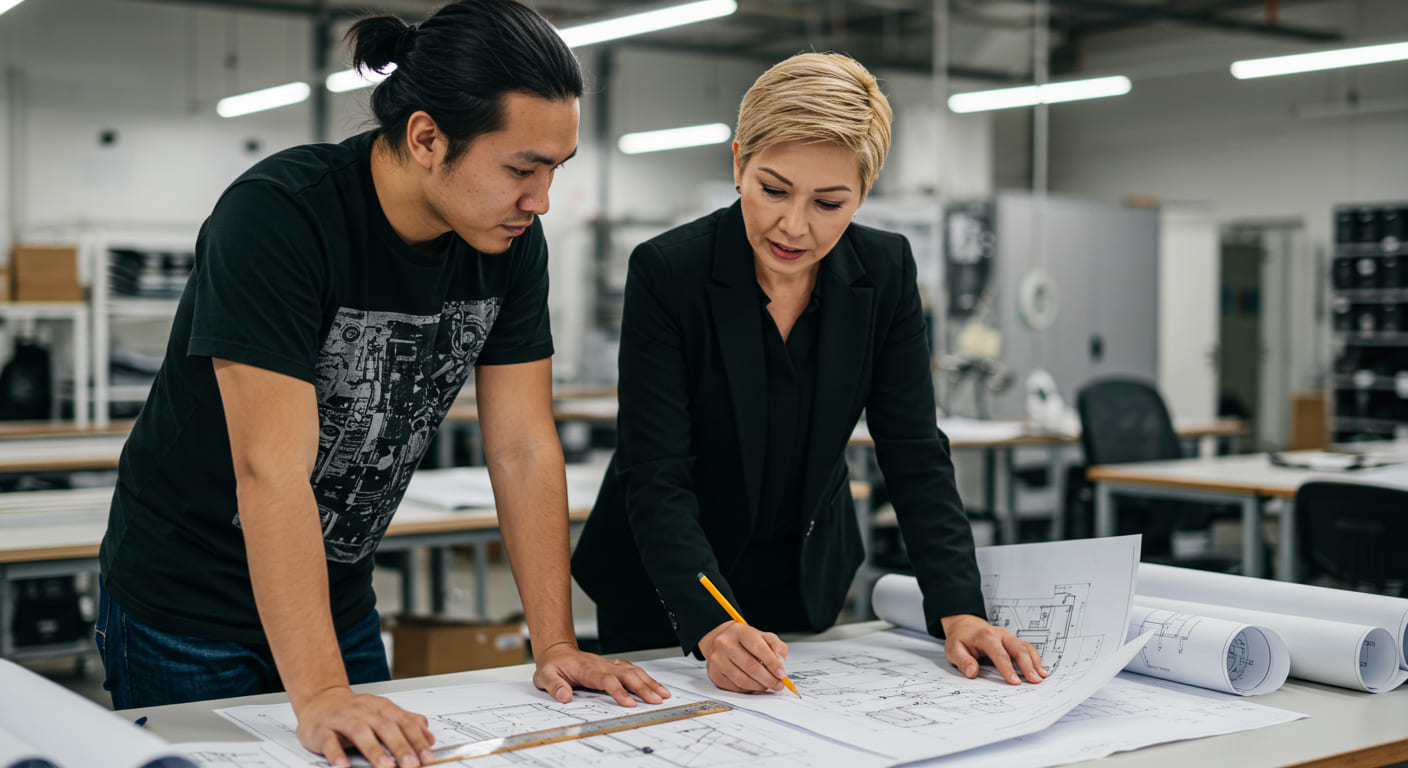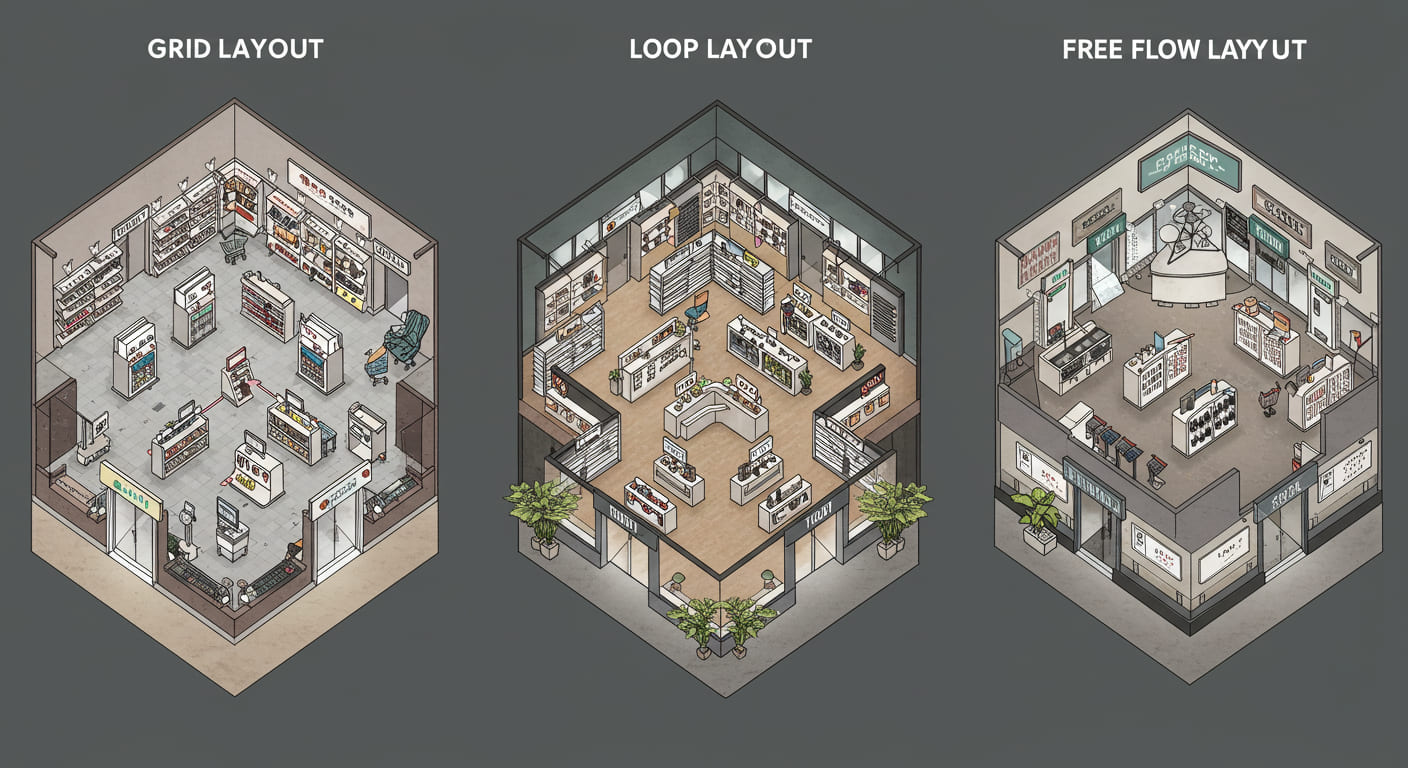
What Is a Store Display Called?
Are you struggling to find the right words when talking to suppliers about your store’s needs? Using vague terms for store fixtures leads to confusion, mistakes, and costly delays on your project.
A store display1 is most commonly called a retail fixture2, a display stand, or simply a display. These terms refer to any furniture or equipment used to present merchandise to customers in a retail setting.

In my career making these items, I’ve heard them called many things. The specific name often depends on the display’s shape, its material, and most importantly, its job on the sales floor. For a designer like Mark, knowing the right language is the key to communicating a vision clearly. Using the right term ensures that a manufacturer like me can build exactly what you imagined. Let’s break down the different names you’ll hear in the industry.
What is a display in a store called?
Do you just call everything a "shelf" or a "rack"? This lack of specific vocabulary makes it much harder to get exactly what you need from a manufacturer or supplier like me.
A display in a store can be called many specific things based on its job. A POP (Point of Purchase) display is for impulse buys, a gondola is for shelving in aisles, and an endcap sits at the end of an aisle.

Dive Deeper
The details matter. Using the right name makes communication with a factory like mine much more efficient. When you say "gondola shelving," I know you need the standard, double-sided shelving that creates the main aisles in a store. If you ask for an "endcap," I know it must fit perfectly at the end of that gondola. If you need a "garment rack," I know it’s for hanging clothes. The term "POP display" tells me it’s likely a smaller, branded unit designed to sit on a counter or stand alone to push a specific promotion. I remember a designer came to us asking for "a stand" for a new cosmetics line. That’s a very broad term. After a quick call, we discovered he needed a complex countertop POP display. It needed custom injection-molded testers, backlit graphics, and security holders for the hero products. Turning his beautiful design drawing into a real, functional display required my engineers to get involved. We designed the internal structure and figured out the best, most cost-effective way to produce each part. That’s a conversation that starts with knowing the right name.
What is the word for store display?
Are you searching online for new ideas using generic terms? You are probably getting thousands of irrelevant results because you are not using the specific words that professionals use.
The professional word for store display is often "fixture" or "retail furniture." More specific industry terms include "visual merchandising hardware1" or "point of sale materials (POSM)2," which are more precise when dealing with suppliers.

Dive Deeper
Using professional language instantly makes the design and manufacturing process smoother. When a designer like Mark talks to my team and uses the word "fixture," it tells us he is thinking about the piece as a permanent or semi-permanent part of the store’s environment. This single word choice opens up a more detailed conversation. It’s no longer just about looks; it’s about durability, materials, and long-term value. For example, a request for a "wood display" is vague. But a request for a "wood fixture" for a high-traffic area leads my team to ask better questions. "Should we use solid wood for a premium feel, or would a durable MDF with a photorealistic wood veneer be a better choice to optimize your costs?" This kind of detailed, cost-saving discussion happens because we started with the right professional term. This is where my team’s a_nd my factory’s value really shines. We bridge the gap between a design concept and a finished product that is both beautiful and built to last, all while keeping the budget in mind.
What is a retail display?
Do you think of your store’s displays as just passive furniture to hold products? This mindset means your biggest on-floor marketing tools are just taking up space instead of actively making you money.
A retail display is a strategic tool, not just furniture. It is any fixture specifically engineered to showcase merchandise in a way that attracts customers, communicates brand value, and ultimately helps drive a sale.

Dive Deeper
We don’t build furniture; we build sales tools. A retail display has a job to do. That job is to sell. Turning a design concept into a hardworking retail display is where a great factory partnership is essential. A designer has the vision. We have the manufacturing expertise to bring it to life effectively and affordably. I had a client who designed a stunning display for a new brand of headphones. The design was all sharp angles and floating shelves. It looked incredible on paper. But my engineering team quickly saw two problems: the structure couldn’t actually support the weight of all the products, and the specified polished metal material was going to be far too expensive. We didn’t just say "no." We worked with the designer. We suggested adding a hidden steel sub-frame for strength. Then, we showed them a new type of plastic with a brushed aluminum finish that looked almost identical to real metal but was a fraction of the cost and weight. The final retail display was strong, looked exactly like the original vision, and came in under budget. That is what a good, hardworking manufacturing partner does.
What is the layout of a store called?
Do customers seem to wander aimlessly in your store, missing key product sections? This is a clear sign that your store’s underlying structure isn’t set up to guide them properly.
The layout of a store is called a floor plan or store layout. Common types include the grid layout, the loop (or racetrack) layout, and the more free-form free-flow layout, each with different strengths.

Dive Deeper
The store layout is the foundation of your entire visual merchandising strategy. Your choice of layout determines how customers move through your space and what fixtures you will need. The grid layout, with its parallel aisles, is super efficient for retailers with a lot of different products, like a supermarket. It needs a lot of standard gondola shelving and endcaps. The loop layout creates a defined path that exposes shoppers to the most products, like in an IKEA store. This requires carefully placed fixtures to guide the way. The free-flow layout, common in boutiques, has no set pattern. It uses standalone fixtures, tables, and racks to create little zones of discovery. This is where we can get really creative with unique fixture designs. Your store layout and your fixtures must work together. A designer might have a specific layout in mind, but I always encourage them to visit our facilities in China. Seeing the new materials and fixture systems we are developing often provides new inspiration. They might see a modular shelving system that makes them rethink their entire layout, opening up new, more flexible, and exciting possibilities for their store design.
| Layout Type | Description | Common Fixtures |
|---|---|---|
| Grid | Parallel aisles, easy to navigate | Gondola Shelving, Endcaps |
| Loop | A defined path through the store | Guiding displays, Feature tables |
| Free-Flow | No set pattern, encourages browsing | Pedestal displays, Nesting tables, Garment racks |
Conclusion
Knowing the right names for store displays and understanding how they fit into a store’s layout is the first step to communicating your vision and creating a truly profitable retail space.